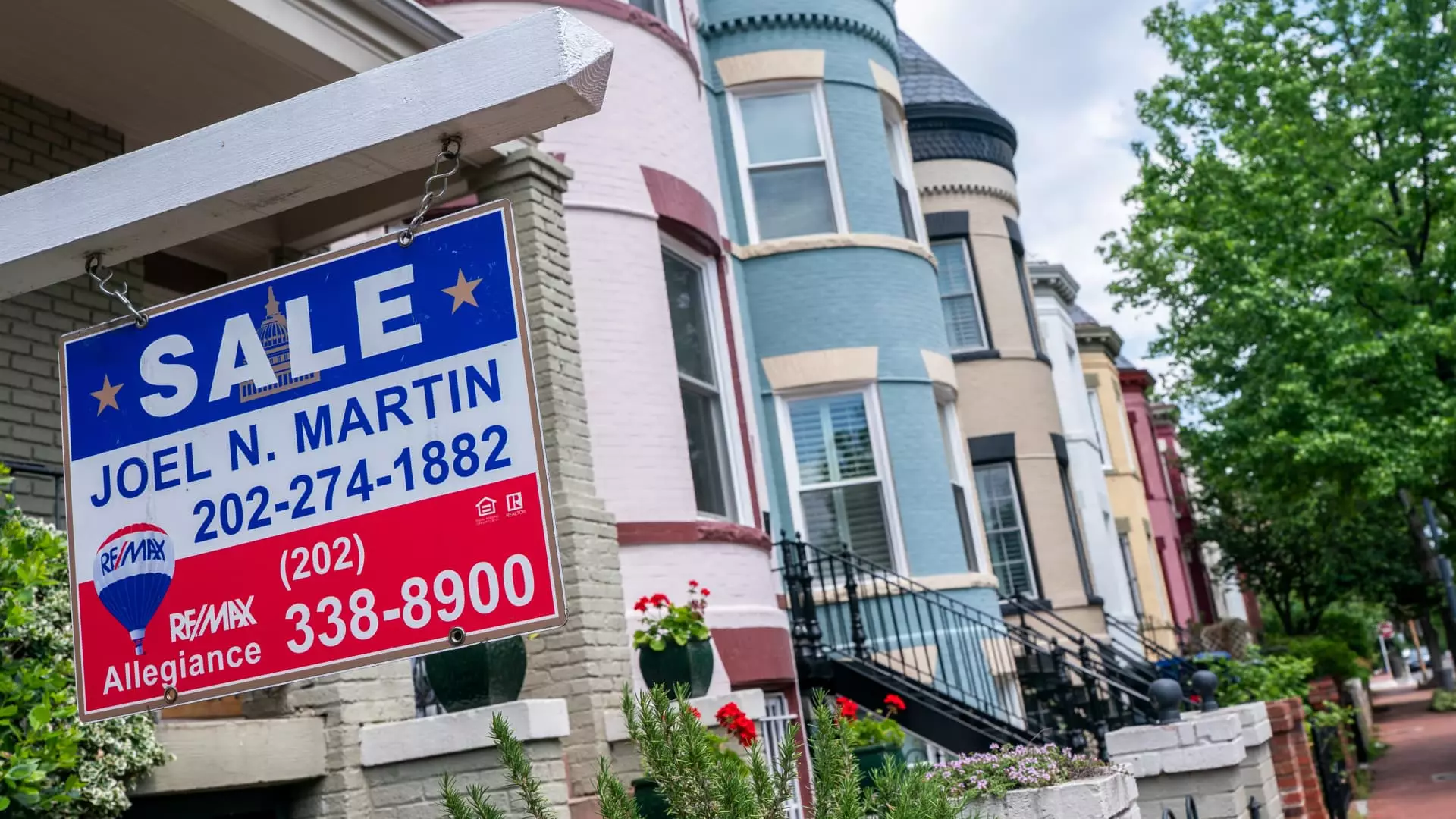Currently, the spring housing market stands as a haunting reflection of economic uncertainty and dwindling consumer confidence. The freshly released data from the National Association of Realtors reveals a disheartening picture—April witnessed a 0.5% dip in the sales of previously owned homes compared to March, leading to an annualized rate of just 4 million units. This marks the slowest April performance since 2009, coinciding dismally with a broader trend of housing lethargy that has persisted throughout the past three years. It is alarming that, even with approximately seven million jobs added to the economy, home sales have stagnated at merely 75% of pre-pandemic levels.
The predictions of housing economists, who were banking on a 2.7% rise in sales, serve to exacerbate the grim outlook. It is as if the economy is caught in a quagmire—inexplicably unable to shake off the shackles of a sluggish housing sector that is desperate for a spring revival yet finds itself continually thwarted by rising mortgage rates and an overarching sense of impending recession.
Inventory Surge: Opportunity or Dilemma?
Interestingly, while sales decline, the inventory of homes has surged by 9% from the previous month and is nearly 21% higher than a year ago. There were 1.45 million homes available for purchase by the end of April; however, this increase doesn’t necessarily translate to a vibrant market. Although this surge signifies a respite for buyers who have been at the mercy of escalating prices in previous years, the current inventory level—it represents a 4.4-month supply—remains below the six-month threshold that economists deem indicative of a balanced market.
The irony here is palpable; as the supply of available homes continues to creep upwards—a sign that should generate enthusiasm—actual consumer engagement remains perilously low. With homes sitting on the market for an average of 29 days, it is sobering to note that the rush to purchase is noticeably absent. A marked increase in cancellation rates to 7% signals growing buyer fatigue and skepticism.
The Price of Waiting: A Market in Limbo
Tragically, the nuances of price appreciation reflect the broader malaise plaguing potential buyers. April’s median home price hit $414,000, boasting the highest figure on record for that month. However, this number masks a more insidious trend, as the year-on-year appreciation slowed dramatically to just 1.8%. For buyers who have been yearning to enter the market, the halt in significant price gains may feel like both a blessing and a curse, leaving them stranded between the hope of cheaper prices and the burden of higher mortgage rates.
Economic speech seems to pivot on a fine line, teetering between optimism and resignation. Chief economist Lawrence Yun describes the market as still leaning towards a weak seller’s territory, yet he acknowledges that the influx of new inventory is finally giving buyers a modicum of negotiating power. Nevertheless, the dwindling appetite for homes priced below $250,000 underscores a stark reality—while wealthier buyers experience more robust sales, those in the more vulnerable brackets are left to grapple with a fear of overcommitment.
Beyond the Numbers: The Emotional Toll
It is vital to look beyond the statistics and consider the palpable anxiety that permeates the market atmosphere. The seemingly insatiable quest for home ownership has morphed into a battle marked by desperation. Younger demographics, particularly first-time buyers who constituted 34% of sales in April, continue to experience frustration as the very dream of homeownership slips further from their grasp under the weight of high interest rates and stagnant economic growth.
Buyers who hope for a revitalized housing market find themselves navigating a complex landscape of psychological barriers exacerbated by rising inflation and market unpredictability. The stark divide between high-end properties and more modest homes only intensifies these tensions, making the American Dream feel increasingly elitist and out of reach. As large swathes of the population witness their homeownership aspirations being dashed against the rocks of economic reality, one cannot help but wonder—at what point does the dream devolve into a nightmare?
The spring housing market, thus, is an amalgamation of opportunity and despair, a reflection of broader economic trends that extend far beyond the realm of real estate.

